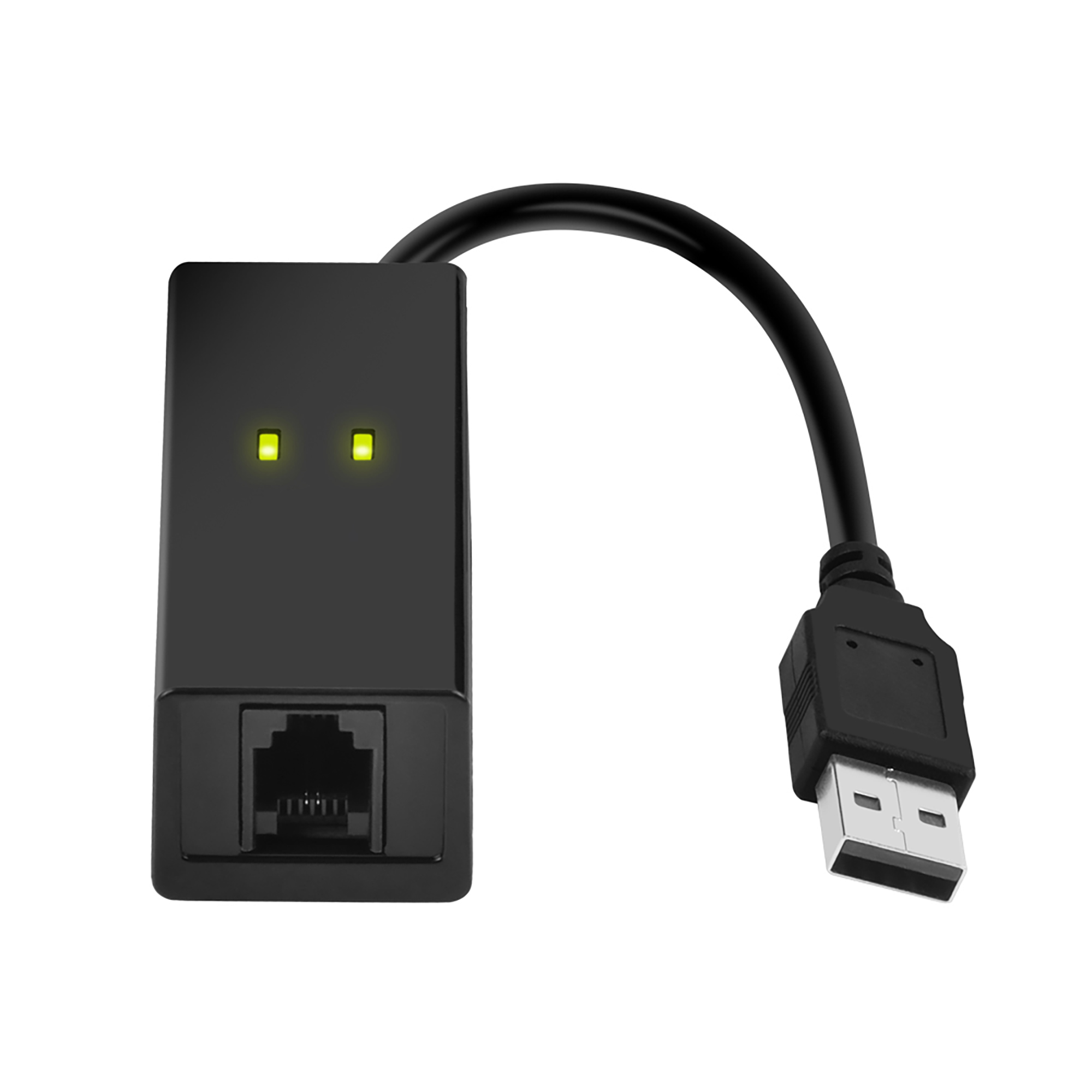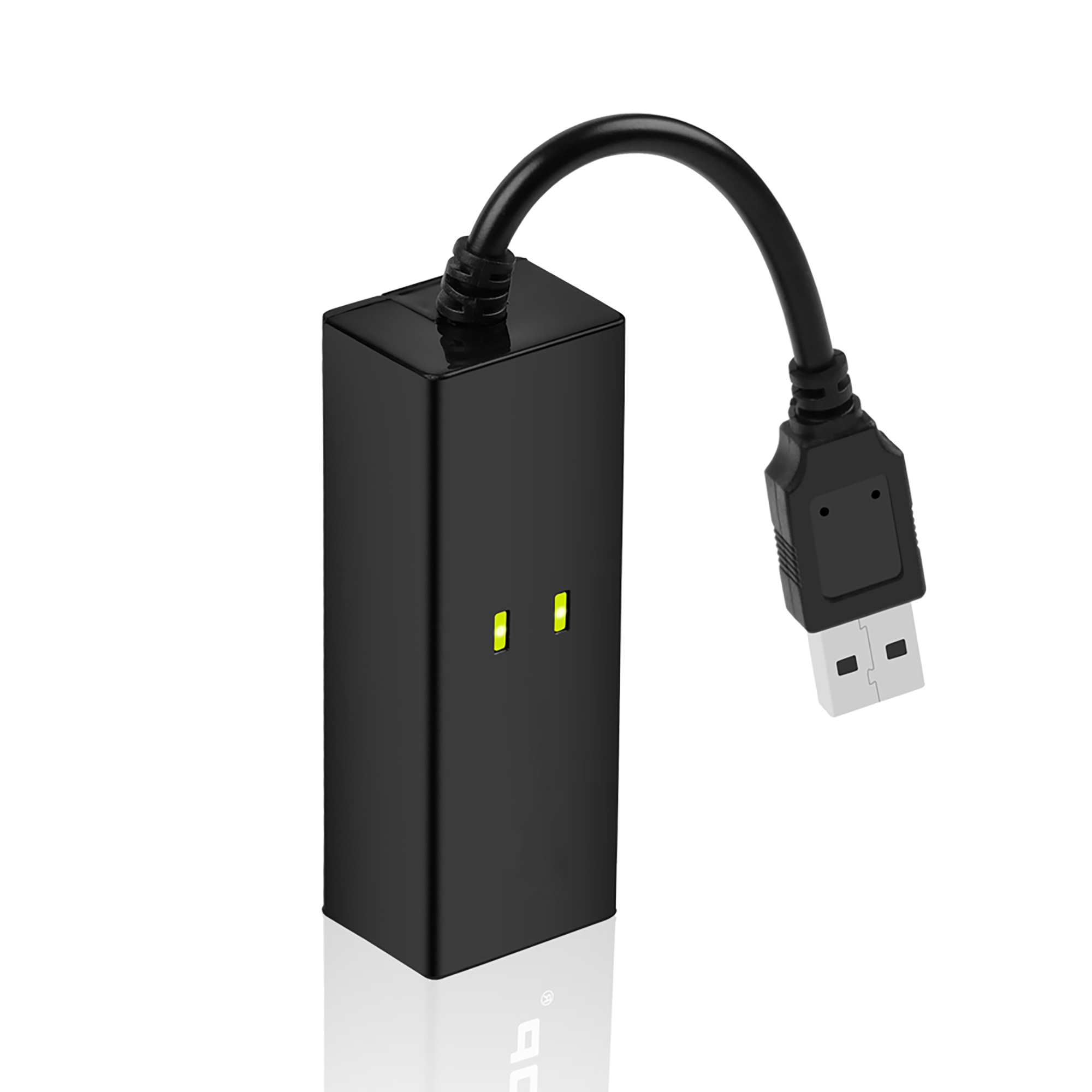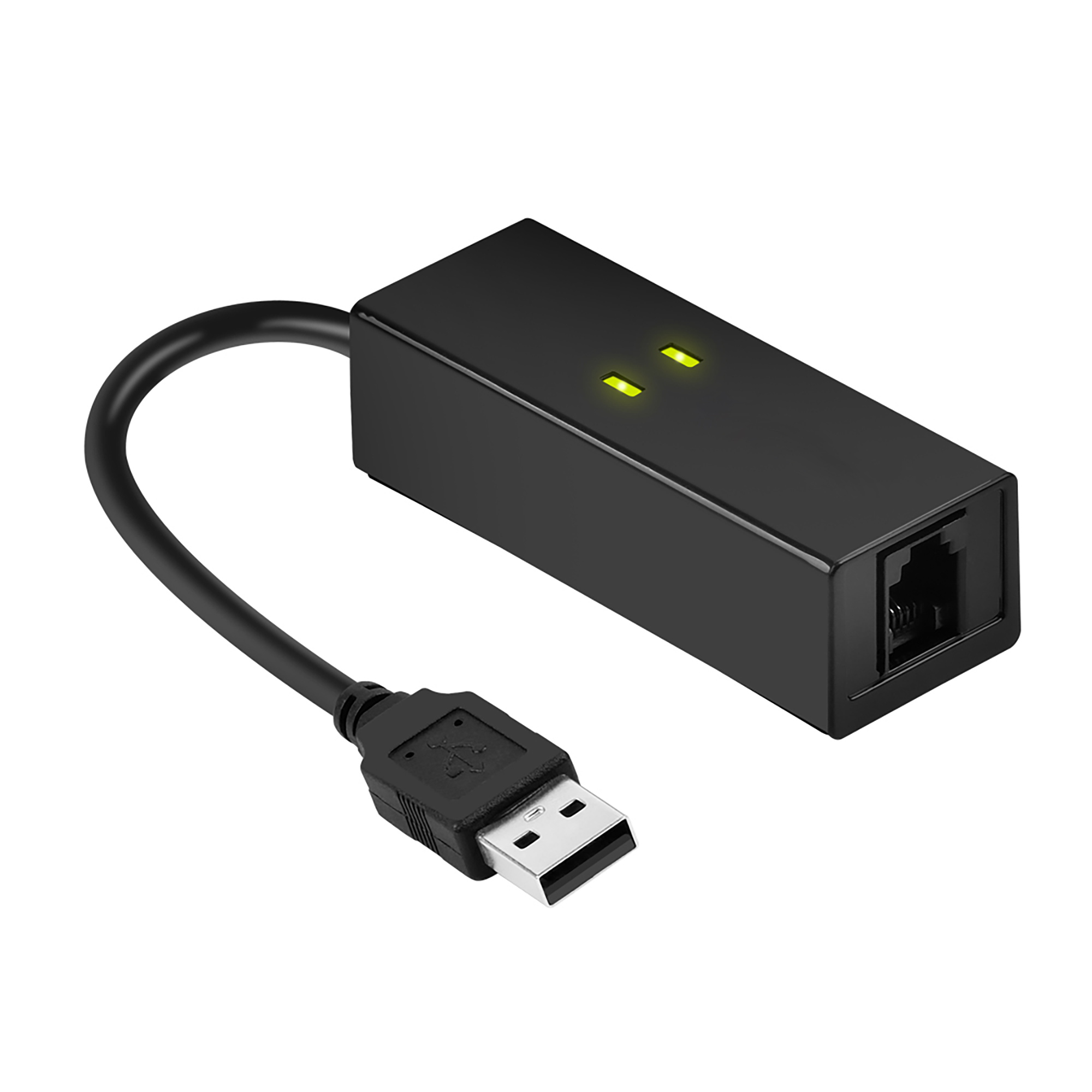This hardware-based 56k USB fax modem lets you access the internet through a dial-up service, when broadband connections are not available. The compact 56k modem is powered through USB, making it a perfect accessory to have on hand when you’re traveling with your laptop or need to have a backup connection to the internet for your desktop. You can use this versatile USB modem as a backup internet connection, for traveling to remote locations, or in rural areas where broadband connections are not available. It supports transfer rates up to 56Kbps (data) and 14.4Kbps (fax) and is compatible with the latest transmission standards (V.92, V.90, and so on).
The controller-based modem uses on-chip processing to deliver dial-up access without taxing your computer’s performance, saving your system’s resources and minimizing the load on the CPU. The USB modem also enables your laptop or desktop computer to function like a fax machine, capable of sending and receiving faxes. It supports the latest fax transmission modes, providing fax transfer rates at 14.4Kbps. With a compact and lightweight design, the USB modem is portable, tucking easily into your laptop bag or travel case. It’s powered through the USB host connection, making it fast and easy to connect without requiring an external power adapter.
■ DIAL-UP & FAX SUPPORT: Hardware-based USB 2.0 Fax modem adds data and fax functionality to your computer/laptop via USB without putting additional load on your CPU; For faxing, rural internet access, security systems, POS credit authorization
■ COMPATIBILITY: Drivers available for Windows 11, 10, 8.1/8, 7, XP, Windows Server 2022, 2019, 2016, 2012 R2, 2008 R2 (drivers available for download)
■ DATA/FAX MODE SUPPORT: Data: V.92, V.90, V.34, V.32bis, V.32, V.22bis, V.22, V.23, V.21 Bell 212A & Bell 103; Fax: V.17, V.29, V.27, V.21 Ch 2, EIA/TIA 578 Class 1 and T.31 Fax Class 1.0
■ TECH SPECS: External 56K Modem; Data Fax; USB Type A; 1 x RJ11 Telephone Jack; 56 Kbps Down, 33.6 Kbps Up Data; 14.4 Kbps Fax V.92; V.44 Compression; Conexant CX93010-21Z; USB Powered
2. Environmental:
- Operating Temperature: 0°C to 60°C (32°F to 140°F)
- Storage Temperature: -10°C to 70°C (14°F to 158°F)
- Humidity: 10~90% RH
3. Hardware:
- Ports: 1
- Bus Type: USB 2.0
- Chipset ID: Conexant - CX93010-21Z
4. Indicators:
- LED Indicators: 1 - Data, 1 - OH
5. Performance:
- Maximum Data Transfer Rate: 56 Kbps Down, 36.6 Kbps Up, 14.4 Kbps Fax
- Type and Rate: USB 1.1 - 12 Mbit/s
- Modulation:
- Modem Modulation: ITU-T V.92 / V.90, V.34, V.32bis, V.32, V.22bis, V.22, V.23, V.21 Bell 212A and Bell 103
- Fax Modulation: V.17, V.29, V.27 Ter, V.21 channel 2
- Data Compression: V.44, V.42bis and MNP 5
1. Data Transmission: Modulation and demodulation enable the conversion of digital data into analog signals for transmission over communication media such as cables, fiber optics, or wireless channels. Modulation converts digital data into suitable analog signals for transmission, while demodulation restores the analog signals back into digital data. This technology is widely used in various communication systems, including telephone networks, wireless networks, satellite communications, and more.
2. Signal Transmission: Modem technology allows signals to be modulated into different carrier waveforms to adapt to different communication media and transmission distances. For example, in wireless communication, signals are modulated to specific frequencies or frequency bands for transmission over wireless channels. This modulation technique improves the quality and reliability of signal transmission.
3. Signal Modulation: Modulation and demodulation techniques are also used to modulate audio signals, video signals, and other analog signals for transmission in broadcasting, television, and multimedia applications. Through modulation, these signals can be transmitted on broadcasting frequencies or television channels and demodulated at the receiver to restore the original audio or video signals.
4. Spectrum Efficiency: Modem technology enhances the efficient utilization of the spectrum. By employing different modulation techniques and parameters, more information can be transmitted within a limited bandwidth. This is crucial for improving the capacity and efficiency of communication systems, especially in wireless communication where spectrum resources are limited.
In summary, modulation and demodulation technology enables the conversion of digital data into analog signals for transmission, adapting to different communication media and transmission distances. It plays a vital role in data transmission, signal transmission, signal modulation, and spectrum efficiency.
int main() {
int modem_fd;
struct termios modem_settings;
// Open the serial port for the modem connection
modem_fd = open("/dev/ttyUSB0", O_RDWR | O_NOCTTY);
if (modem_fd < 0) {
perror("Failed to open the serial port");
return 1;
}
// Configure the serial port settings for the modem
tcgetattr(modem_fd, &modem_settings);
cfsetospeed(&modem_settings, B115200); // Set the baud rate to 115200
modem_settings.c_cflag |= (CLOCAL | CREAD);
modem_settings.c_cflag &= ~PARENB; // No parity
modem_settings.c_cflag &= ~CSTOPB; // 1 stop bit
modem_settings.c_cflag &= ~CSIZE;
modem_settings.c_cflag |= CS8; // 8 data bits
tcsetattr(modem_fd, TCSANOW, &modem_settings);
// Dial command
char dial_command[] = "ATDT 1234567890\r\n";
// Send the dial command to the modem
write(modem_fd, dial_command, strlen(dial_command));
// Wait for response
char response[256];
ssize_t num_bytes = read(modem_fd, response, sizeof(response) - 1);
if (num_bytes > 0) {
response[num_bytes] = '\0';
printf("Modem response: %s\n", response);
// Check the response to determine if the connection was successful
if (strstr(response, "CONNECT") != NULL) {
printf("Connection established successfully!\n");
} else {
printf("Connection failed.\n");
}
} else {
perror("Error reading modem response");
}
// Close the modem connection
close(modem_fd);
return 0;
}













